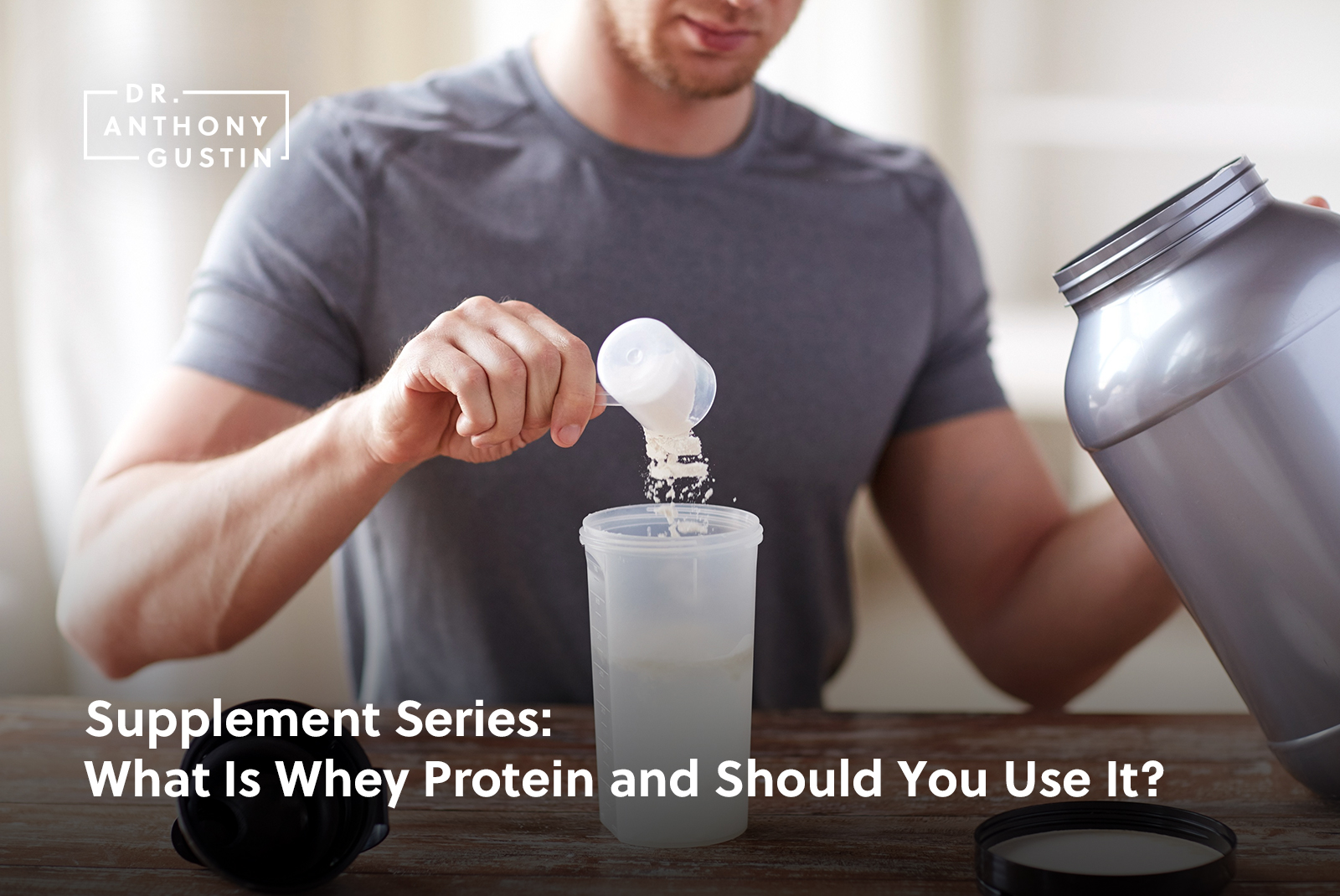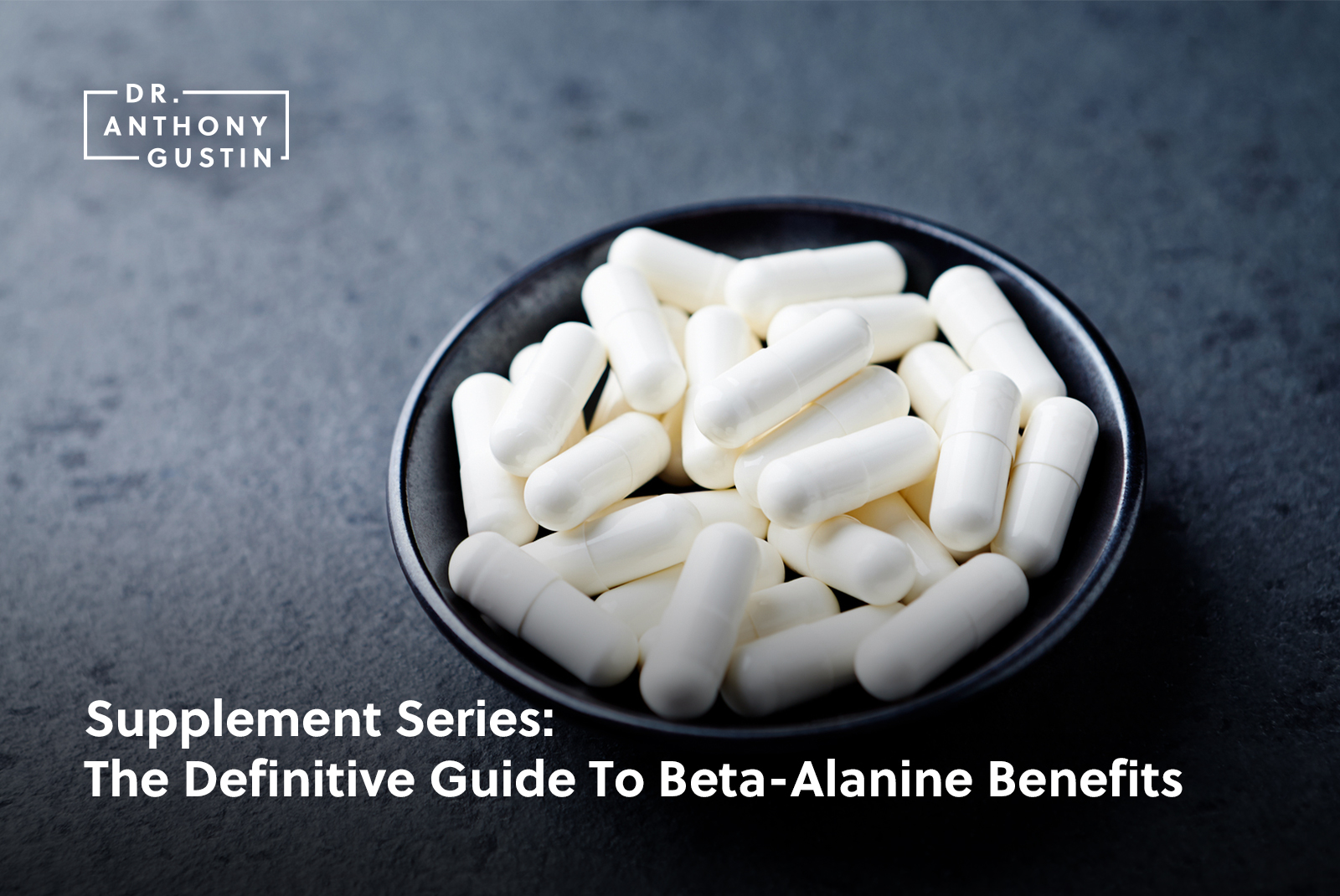Supplement Series: What Is Whey Protein and Should You Use It?

With the explosion of supplements and subsequent “proprietary blends,” it seems like a good time to reevaluate one of the staples that people spend so much money on: whey protein. The ubiquitous “protein shake” is downed over and over but are we really looking at where it comes from and how we best utilize this powerful protein? Grass fed whey protein powder is also storming onto the paleo nutrition scene. What is whey protein? Do you need to buy it? Are there better protein powders out there? We’ll discuss all of that and more.
WHAT IS WHEY PROTEIN?
Many us of know of whey protein and that it could potentially be a good supplement, but what is whey protein, really?
Whey protein is extracted from a byproduct of dairy (specifically cheese) production. When milk is filtered and cheese is made a leftover liquid is refined to make whey protein powders. The essential amino acids that are found in whey are used for building blocks for tissues in the body. Whey protein also has beneficial immunoglobulins, muscle building properties, and protein synthesizing effects.
WHAT TYPES OF WHEY ARE THERE?
When people are looking for supplemental whey proteins there are plenty of different options. Whey isolate is essentially the pure protein with remaining fat and lactose from the milky liquid removed nearly entirely. This makes whey isolate a fantastic option for anyone with sensitivities towards dairy products with bloating or digestive issues, but does not eliminate these sensitivities completely (colostrum can help improve digestion).
.
This processing makes it harder to make and therefore more expensive. Whey concentrate is the other very commonly used form and is made from, you guessed it, concentrating the full amount of whey left from the dairy process. This includes “impurities”, fat, and lactose, among other things.
PROCESSING MATTERS
Whey is most inexpensively extracted through the milk-like liquid via an aggressive heating and drying process. The protein molecule is chopped up and denatured in this process, leading to a bunch of destroyed and unavailable amino acids instead of the whole amino acid structure. The more time consuming and costly procedure is cold processed, where the liquid is filtered and dried however, not subject to the destruction that over-heating and drying has on the amino acids and immunoglobulins. Try to stick with cold processed whey if you are aiming to get the best bang for your buck out of your protein powders.
DO HORMONES/FEED MATTER?
When I recommend consuming animal proteins, the default is always towards grass-fed or pasture raised animals and away from rBGH. The fatty acid profile (more omega 3, CLA) and nutrient density (improved vitamins, minerals) among other factors makes it a much more complete food than the grain-fed alternative. However, does any of this stuff actually make it into whey protein? When processed, the whey is stripped of micronutrients, vitamins, minerals, and fats, leaving you paying more for the things you’re not getting.
If you extract the problematic/beneficial parts of the animal product and all you’re left with is pure protein I would say you’re safe not going 100% organic or grass-fed in this case. Bottom line is if you are using whey ISOLATE, nutritionally, it is less important to search for grass fed whey or organic sources. Whey concentrate should be a little more concerning however due to the inclusion of fats and lactose.
CHECK THE INGREDIENT LIST
The majority of mass produced proteins offer tantalizing flavors. Just because it says “natural,” doesn’t mean it is. For example, the Optimum 100% Natural Whey contains fructose as a sweetener, a form of sugar not as readily digestible as others that heads straight to the liver to be processed.
For the majority of mass produced powders, they are ridden with high fructose corn syrup, aspartame, sucralose, acesulfame potassium, artificial dyes and colors, and other harmful and hormonally disruptive additives.
Going for the unflavored option here is the smart move to reduce artificial flavorings, emulsifiers, and unnecessary sugars.
SHOULD YOU USE WHEY PROTEIN?
Now you know what whey protein is, how to source it, and what to look for, now you need to know if you should even be taking it.
First of all, it doesn’t matter on the processing: whey protein will always contain dairy derivatives. If you’ve ever had sensitivity to dairy, you should’nt be using it. There are a lot of other protein powders you can take if that is your goal.
Since whey protein digests so quickly and is used rapidly in the blood stream, you better make sure you have a reason to be taking it. A huge shot of easily digested protein in your bloodstream without need for it may increase blood sugar, which can lead to inflammation or weight gain.
If you’ve just finished a workout or exercise, your body is ready to absorb a ton of protein and put it to use. This would be the best time for anyone to use whey protein, after a workout.
You shouldn’t need more than 30-40g per serving, and anything beyond that isn’t going to be put to use anyway.
KEY POINTS ON WHEY PROTEIN
-
USE WHEY ONLY IF YOU CAN TOLERATE WHEY AND YOU’RE TAKING IT AFTER A WORKOUT
-
GO FOR WHEY ISOLATE OVER CONCENTRATE – IT IS A MORE PURE FORM OF WHEY THAT HAS LESS MILK FAT AND INFLAMMATION AND MORE PROTEIN.
-
GO FOR COLD-PROCESSED – THIS IS LESS DAMAGING TO THE PROTEINS. IF THE LABELS DOESN’T SAY IT, IT WAS PROBABLY HEATED AND THE PROTEINS WERE DESTROYED.
-
GO FOR UNFLAVORED OR MINIMALLY PROCESSED – IF THE INGREDIENT LIST IS MORE THAN THREE INGREDIENTS, OR YOU CAN’T PRONOUNCE ANY OF THEM, DON’T BUY IT.
-
GO FOR GRASS FED WHEY OR ORGANIC WHEY – NOT A BIG DEAL WITH ISOLATE, BUT THERE ARE SUSTAINABILITY FACTORS YOU SHOULD ALSO CONCERN YOURSELF WITH.
When it comes down to it, if you have time I would recommend getting your nutrition from whole foods. Some grass-fed ground beef or poached eggs post-workout would really be the best option here for your protein needs. If you are pressed for time, this is why I developed Equip Foods Prime Protein: 100% grassfed beef protein powder. This is the easiest way to get the full utilization of the amino acids in addition to beneficial fatty acids and increased vitamins and minerals without being heavily processed. I do realize that sometimes there are convenience factors associated with protein shakes and sometimes unavoidable in people’s schedule who are trying to get some nutrients into their system but are crunched on time and preparation methods – beef liver supplements and beef organ supplements can be helpful here.
.
It seems like the most nutrient dense and bioavailable protein powders recommended would be unflavored, cold-processed, whey protein isolate. You will likely pay a little more for the cold processed isolate, however, the amino acid uptake and the bioavailability of the protein will be much higher. I wouldn’t worry as much about grass-fed vs. grain-fed or organic in this instance as most of the oxidization and negatives associated with grain-fed cows comes in the fat structure as well as the changes in lactose (which are removed in isolate), not to mention filtration of the micronutrients.
If the unflavored is too unpalatable, try adding some cinnamon, dark cocoa powder, grinding in some vanilla beans, mixing with freshly roasted single-source coffee or blending with almond butter.
Stay tuned for an in-depth discussion of casein and soy protein powders and their comparison to whey!




